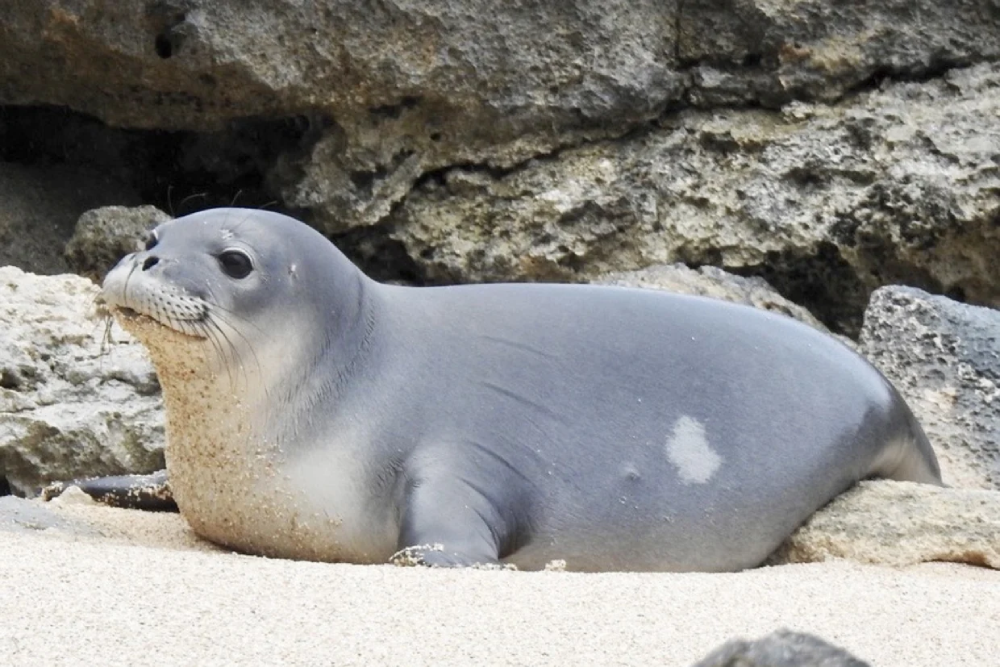In the azure waters of the Pacific Ocean, among the paradisal islands of Hawaii, lives one of the rarest and most endangered marine mammals on Earth: the Hawaiian Monk Seal (*Neomonachus schauinslandi*). With its endearing appearance and profound ecological significance, the Hawaiian Monk Seal embodies the delicate balance between nature and human activity, making it a symbol of both environmental resilience and vulnerability.
A Species Under Threat
The Hawaiian Monk Seal is a true endemic, meaning it lives nowhere else on the planet except the Hawaiian archipelago. However, despite its exclusivity to this region, its population has been on a steady decline for decades, primarily due to human-induced factors such as habitat destruction, marine debris, overfishing, and disturbance caused by human recreational activities. As of the latest estimates, only around 1,400 individuals remain in the wild, making it one of the most endangered marine mammals in the world.
Physical Characteristics and Adaptations
One cannot help but be captivated by the distinct appearance of the Hawaiian Monk Seal. These creatures possess a sleek, streamlined body covered in short, coarse hair ranging from light gray to brownish-black, often with lighter patches on their bellies. Their large, soulful eyes seem to reflect the wisdom of the ocean, while their bewhiskered faces lend them an aura of ancient mystique.
These seals are well-adapted to their marine environment, equipped with powerful flippers for agile swimming and hunting. Their nostrils can close tightly to prevent water from entering while diving, allowing them to descend to impressive depths in search of prey, which mainly consists of fish, cephalopods, and crustaceans.

Life Cycle and Behavior
The life of a Hawaiian Monk Seal revolves around the rhythm of the ocean. They are primarily solitary animals, though they occasionally congregate in small groups, particularly during breeding season. Females typically give birth to a single pup every two to three years, with the pupping season peaking between March and August.
Mother seals are incredibly nurturing, dedicating several weeks to nursing and caring for their offspring until they are weaned and ready to fend for themselves. Pups rely solely on their mother’s milk for the first six weeks of life, after which they begin to learn how to hunt and survive independently.
As adults, Hawaiian Monk Seals are formidable hunters, capable of diving hundreds of feet below the ocean’s surface in pursuit of prey. However, they also spend a considerable amount of time basking on beaches and rocky shores, especially during the molting season when they shed their old fur in favor of a sleek new coat.
Conservation Efforts and Challenges
The plight of the Hawaiian Monk Seal has not gone unnoticed, and concerted efforts are underway to protect and conserve this iconic species. Organizations such as the National Oceanic and Atmospheric Administration (NOAA) and the Hawaiian Monk Seal Recovery Team are leading the charge in implementing various conservation strategies, including habitat restoration, population monitoring, and public education initiatives.
Despite these efforts, the Hawaiian Monk Seal continues to face numerous challenges that threaten its survival. Climate change, in particular, poses a significant threat, as rising sea levels, ocean acidification, and warming temperatures alter marine ecosystems and disrupt traditional feeding grounds. Additionally, entanglement in marine debris, accidental bycatch in fishing gear, and human disturbance on beaches further compound the threats facing these magnificent creatures.
A Call to Action
The conservation of the Hawaiian Monk Seal is not just a matter of preserving a single species; it is about safeguarding the delicate balance of marine ecosystems and protecting the biodiversity of our planet. Each individual has a role to play in ensuring the survival of these remarkable animals, whether it be through responsible eco-tourism, reducing plastic consumption, supporting marine protected areas, or advocating for sustainable fishing practices.
By coming together as stewards of the ocean, we can ensure that future generations will continue to marvel at the sight of Hawaiian Monk Seals basking on sun-drenched shores, a testament to the enduring beauty and resilience of nature in the face of adversity. As guardians of our blue planet, let us pledge to protect and cherish these majestic creatures, for they are not just inhabitants of the sea—they are ambassadors of hope in a world where every living being deserves a chance to thrive.









